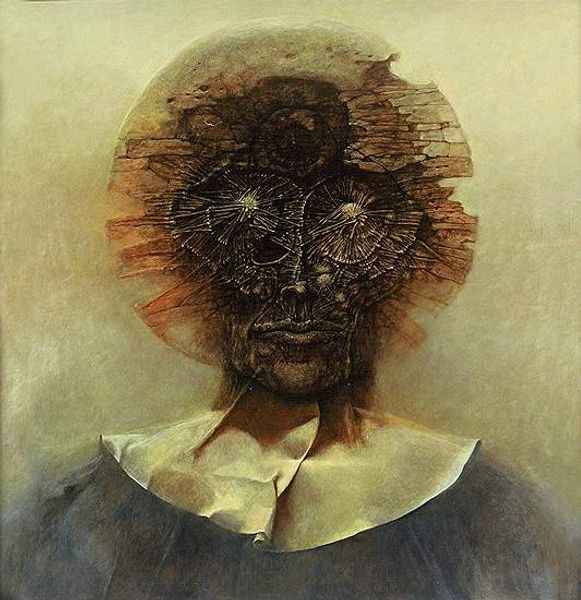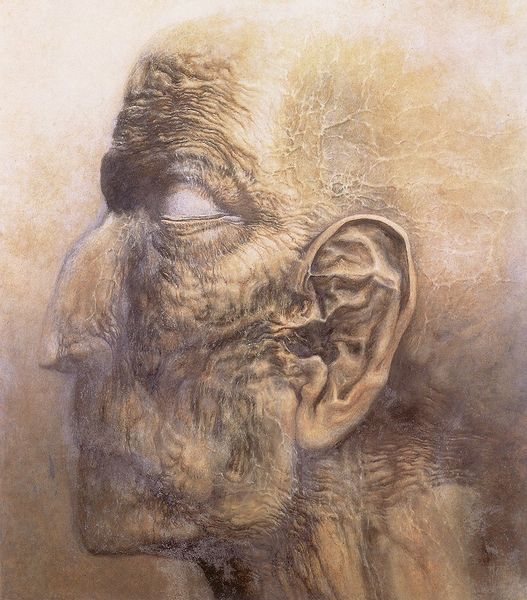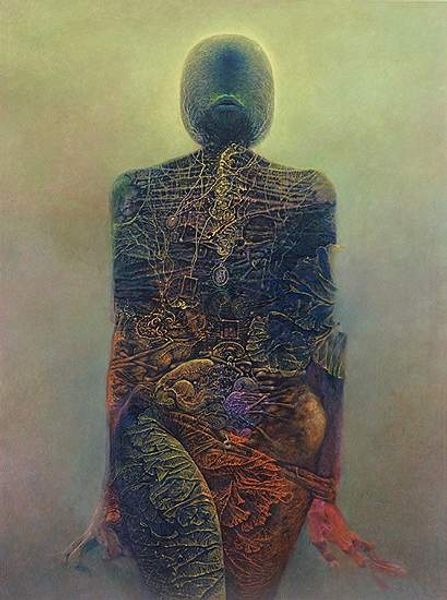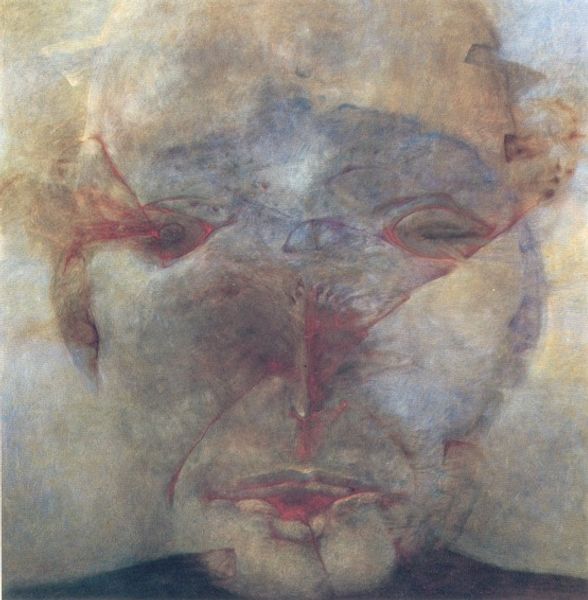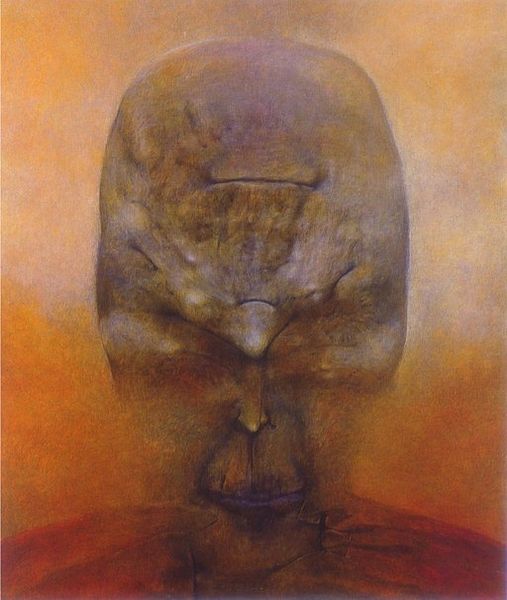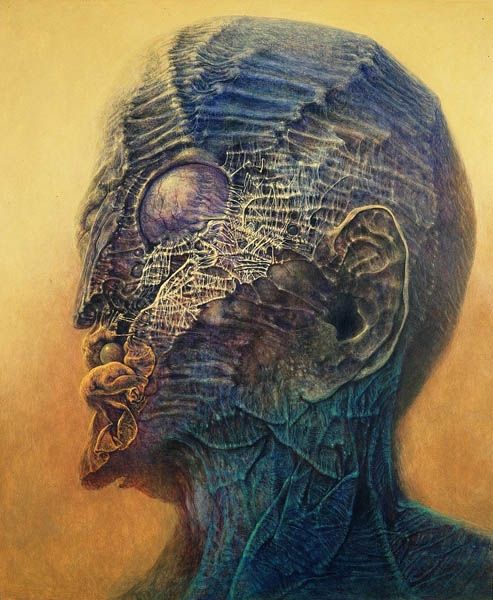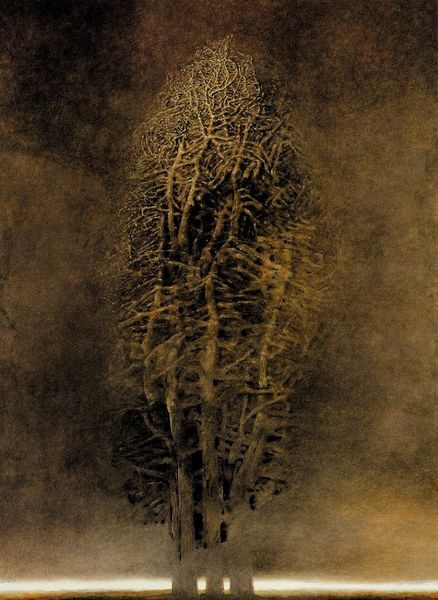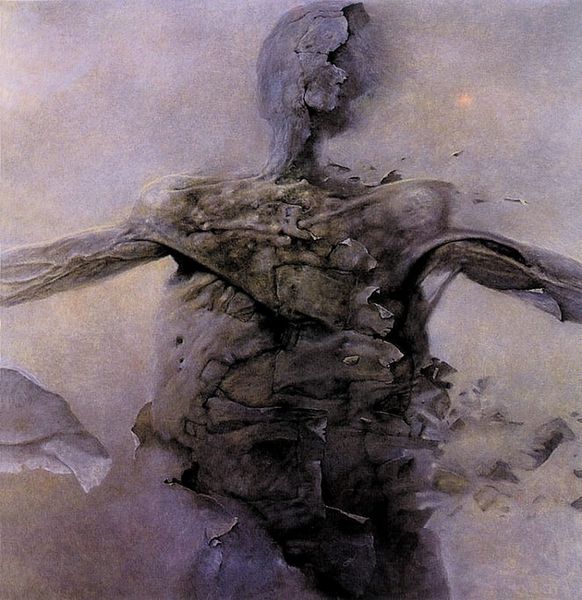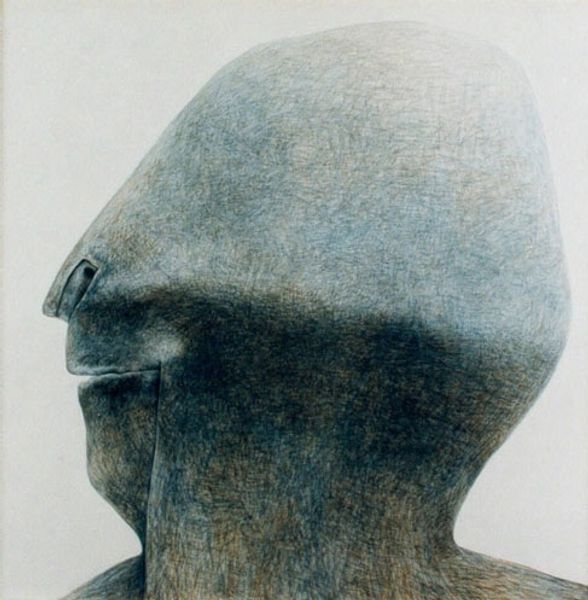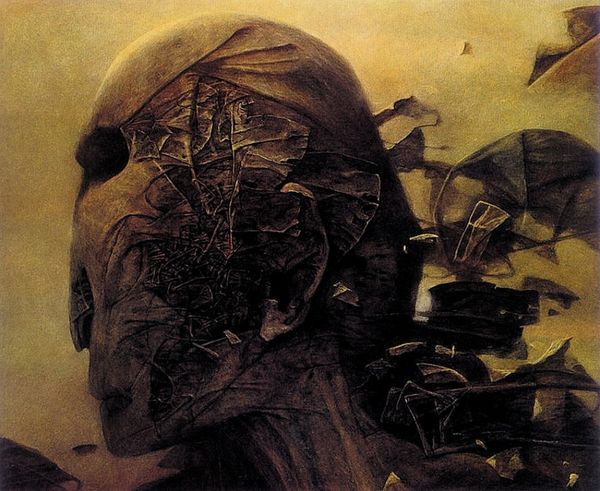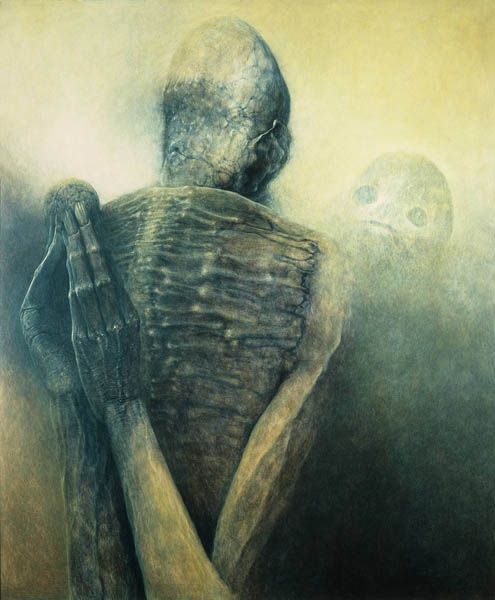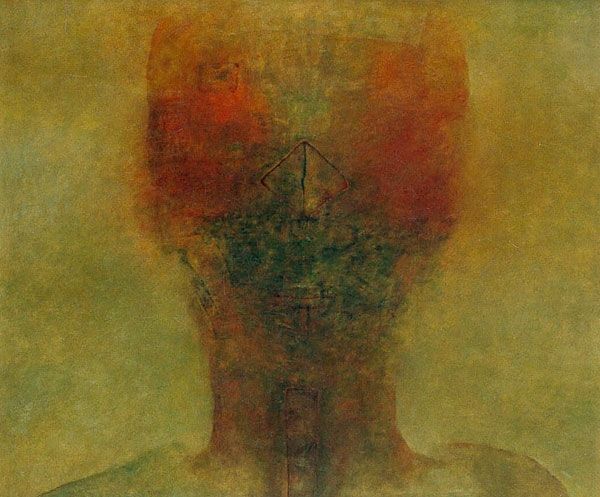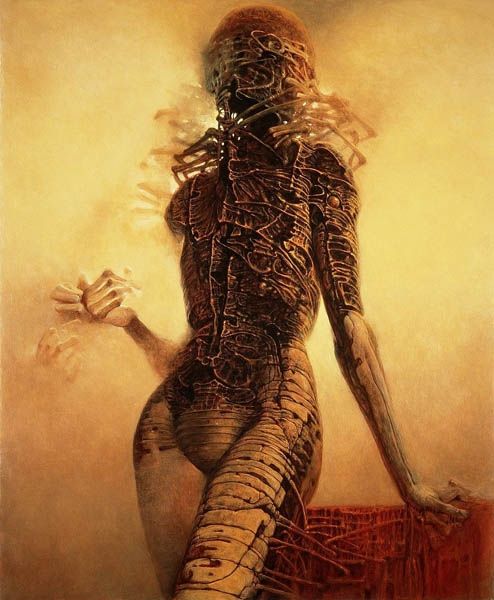
painting, oil-paint
#
portrait
#
allegories
#
symbol
#
painting
#
oil-paint
#
figuration
#
oil painting
#
neo-expressionism
#
abstraction
#
symbolism
#
grotesque
#
modernism
Copyright: © The Historical Museum in Sanok (Poland) is the exclusive owner of copyrights of Zdzisław Beksiński's works.
Curator: Right, let’s delve into this oil painting by Zdzislaw Beksinski. It's an untitled work, which is so typical of him, giving us no easy answers. What's your initial reaction? Editor: My gut churns a bit, if I’m honest. It's unsettling—the pallid green, the obscured face… it speaks of decay, or perhaps some sort of internal wound made external. The complete obliteration of his face with what appear to be some type of decaying structures really emphasizes how painful it can be for the past to catch up to a person. Curator: Precisely. Beksinski often explored these visceral, often disturbing themes. His paintings skirt the edges of surrealism, but with a distinctly darker edge. This particular one brings to mind the symbol of blindness, doesn't it? The obscuring of the face, as if denying sight. It brings to mind an Oubliette. Editor: Absolutely, and the obliteration goes further than simple blindness. That central eye-socket swirling with gnarled architecture looks like a petrified Medusa, maybe representing repressed memories turning to stone. It carries the weight of psychological scarring, I think. He uses this green as an underglow, which you often find in horror settings to let you know that something may not be safe or 'okay'. Curator: Interesting! So, more than simply denying sight, he is commenting on the dangers of memory itself, a psychological scar. Beksinski famously burned some of his own paintings. Was he trying to bury these kinds of memories himself, or perhaps destroy symbols before they became something else entirely? Editor: Could be a little bit of both. The image resonates so strongly because these anxieties and repressions are universal. His work provides an opportunity for viewers to touch, observe, and reflect upon the grotesque in a safe way. Beksinski's entire work screams alienation; a singular image like this almost sums it up. The figure remains a mere shadow or ghost. A memento mori that follows our modern day. Curator: Well, as ever, exploring Beksinski’s work leads us to dark places, but also, potentially, to catharsis. This untitled oil embodies an artist processing complex psychological territories on the canvas. Editor: A true journey into the symbolic heart of suffering, absolutely. I see an enduring vision that stays with you. It's like the memory, once encountered, you can never entirely shake it off.
Comments
No comments
Be the first to comment and join the conversation on the ultimate creative platform.
